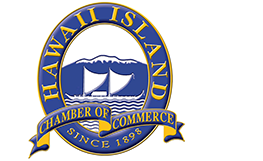From forest to sea, UH Hilo serves Hawai‘i Island
In preparing to host the upcoming University of Hawai‘i Board of Regents meeting to be held at UH Hilo this month, I am currently outlining my presentation to the regents about how our university is engaged in research and community service across the island. As we compile information from faculty and staff, I am thrilled to see a proliferation of dots on our coverage map that indicate the university is serving communities and the ʻāina all over our island in numerous ways.
Some of that work is happening in our island forests and some in coastal ecosystems. You might not be aware of this kind of important research until a publication or presentation comes out. Other activities headed by UH Hilo researchers and other educators are taking place every day in our island schools and communities.
Forestry conservation research is happening in Hakalau, Hilo, Keaukaha, Keau‘ohana, Laupāhoehoe, Pālamanui, Waiākea, and off Saddle Road, under the direction of Professor of Biology Becky Ostertag, a tropical forest ecologist who specializes in tropical forests and tropical ecosystems. Native bird conservation research is happening in Hakalau, Kanakaleonui,Maunakea, Volcano, and off Saddle Road, by Professor of Biology Pat Hart who specializes gathering the acoustics of birds to identify locations and changes in populations.
Associate Professor of Marine Science John Burns runs the Multiscale Environmental Graphical Analysis Laboratory, commonly called MEGA Lab, located at the Mokupapapa Discovery Center in downtown Hilo, an easily accessible location for the general public. The lab develops technologies to understand human-environmental interactions in our coastal ecosystems, and they use storytelling and community engagement to show how science improves our daily lives. He and his research team have 3D mapped the reefs all along the Kona, Kohala, and Hāmākua coasts.
In other fields, Assistant Professor of Sustainable Tourism Angela Fa‘anunu, based at the College of Business and Economics and working closely with our College of Agriculture, Forestry, and Natural Resource Management, is studying and teaching viable sustainable tourism and business practices through close collaborations with local farms in Honomu, Onomea, Pauka‘a and Pepe‘ekeo.
Faculty at the agricultural college, under the leadership of Director Norman Arancon, who specializes in soil ecology, are conducting research and community outreach on food and energy crops, animal science, honey production, soils, and ornamentals, all of which benefit farmers islandwide.
At the Daniel K. Inouye College of Pharmacy, students are honing their skills under the supervision of local pharmacists while providing community outreach via health education and screenings such as blood pressure and blood sugar checks at locations and events throughout the island.
In a pharmaceutical research project equally weighing modern science and Native Hawaiian traditional knowledge, Professor Leng Chee Chang and Professor Supakit Wongwiwatthananukit are working closely with a Native Hawaiian healer who has vast experience in the use of laʻau lapaʻau (Hawaiian medicine) to investigate a Hawaiian medicinal plant for its anti-inflammatory properties.
Associate Professor of Drama Justina Mattos and our Performing Arts Center Manager Lee Barnette-Dombroski are doing outreach to local schools assisting with internships, career days, dance events, stage costumes, and Hawaiian language performances in Hilo, Kea‘au, Mountain View, Pāhoa, and Pāpaʻikou. Justina also runs a community-based play-reading group that includes playwrights from Hilo, Ka‘ū, Kona, Puna, Waimea, and Volcano.
Building on decades of research and community engagement, faculty and staff based at Ka Haka ʻUla o Keʻelikōlani College of Hawaiian Language are heading trainings, sharing resources, and developing educational programs at schools in Honoka‘a, Kea‘au, Kealakekua, Keaukaha, and Waimea. The college’s Hale Kuamoʻo Hawaiian Language Center produces and disseminates Hawaiian language books, curriculum, resources, and teacher training to four Hawaiian medium schools on Hawaiʻi Island.
There is so much more I could share, but the takeaway here is that the strength of UH Hilo is found in our people and the people in our community. The community-engaged, place-based education that we provide to students prepares them well to deal with the complex issues of today and tomorrow, and also allows us to give back to this community and land that we are honored to call our home.
With aloha,
Bonnie D. Irwin


Recent Comments